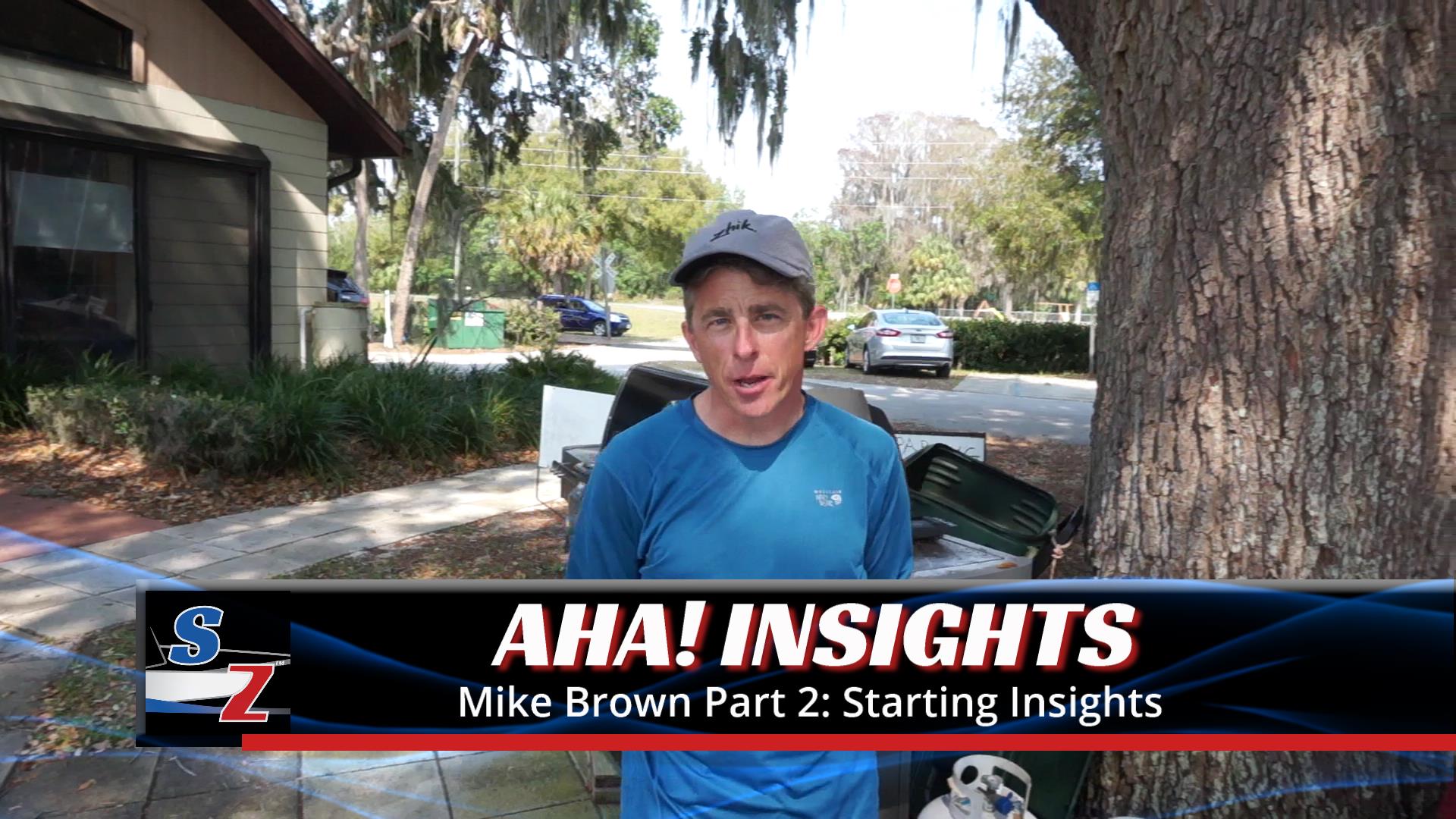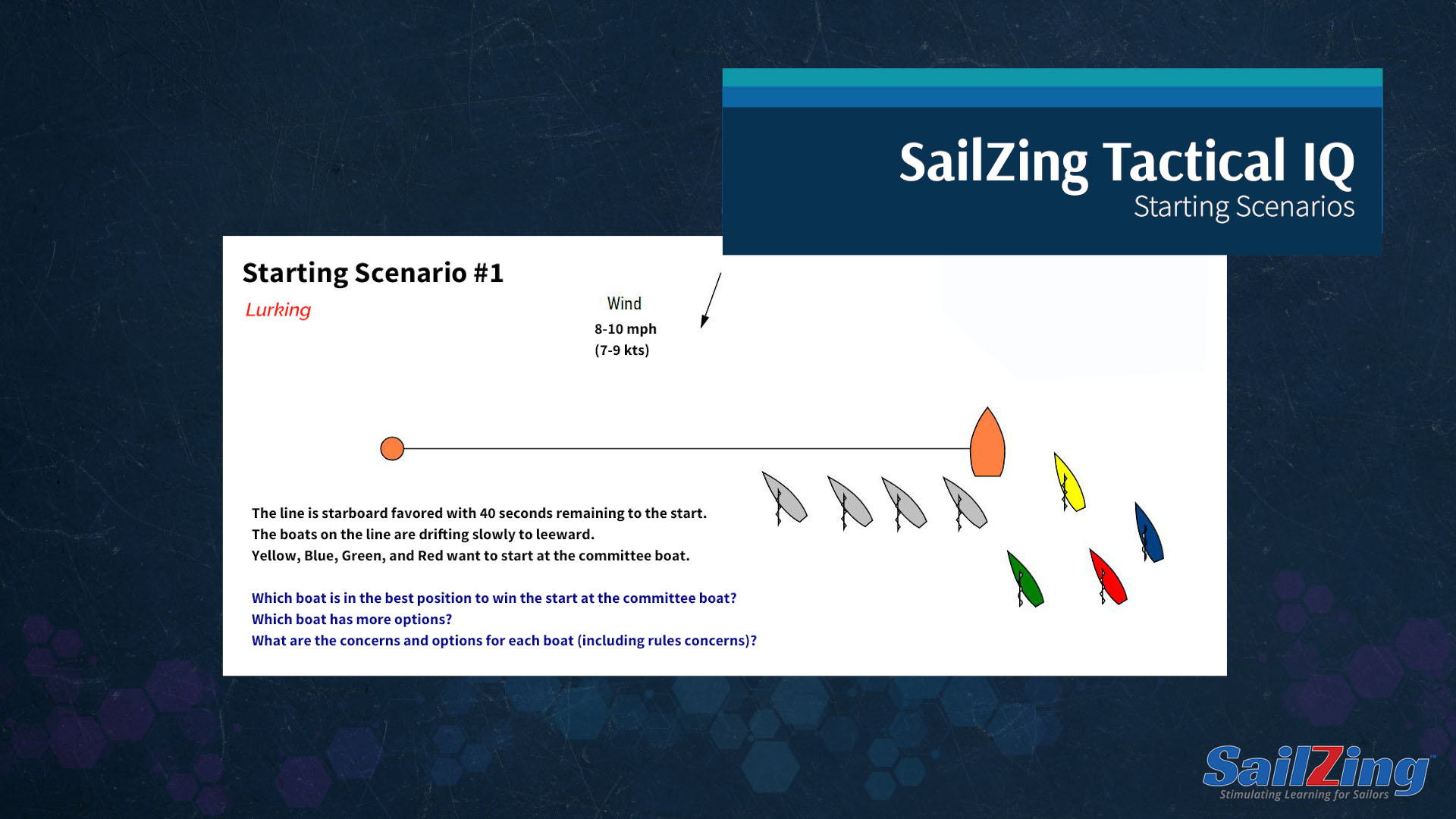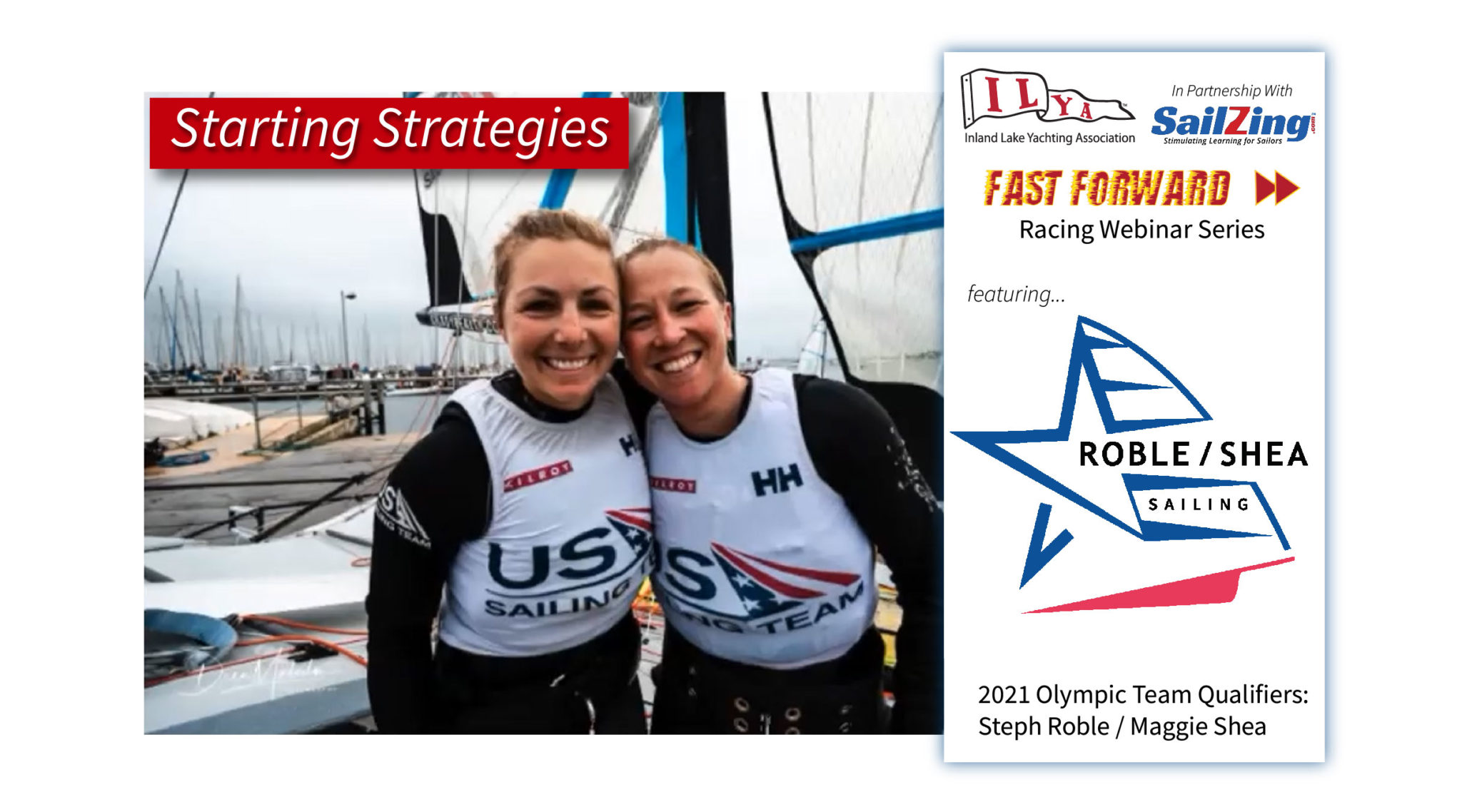Given the importance of a good start, you’d think that everyone would work very hard to master the techniques. But how many of us actually have good starting performance? We studied SailZing’s drone video of one MC Scow race and rated starting performance on three criteria. Only 25% of the competitors met at least two of these criteria.
We then correlated starting performance to race position at the first windward mark and the finish. We were not surprised to find that 100% of the top five boats and a large majority of the top 15 met at least two of the three starting performance criteria.
Finally, we noted some techniques that helped the successful starters.
View the annotated SailZing video to see the results or read the summary below.
Competitors and Race Conditions
We took drone video of Race 2 of the MC Scow Southeast Regional Regatta at Lake Eustis Sailing Club, November 10-11, 2019. 39 boats competed. The wind was 8-12 mph at an average bearing of 25 degrees, and was fairly uniform over the course, with small shifts. The wind was forecasted to gradually go veer right throughout most of the day.
The starting line was square to the average wind and the results show that there was not a significant favor to either side of the line.
Starting Performance Categories
We used the following three criteria for starting performance.
- In front row. To rate this, we simply counted the number of boats that were within one boat length of the line with no other boats in front of them at the start signal.
- Ability to accelerate. To rate this, we looked for a gap of at least one boat length to leeward either at the start or within the first 10 seconds.
- Bailed out promptly after bad start. We looked at boats that did not meet one of the first two criteria, but tacked away within the first 20 seconds or the first 45 seconds.
Starting Performance Ratings
Front Row
Only 12 boats (33% of the fleet) were in the front row at the start. The line was probably not long enough for 39 boats, but we judged that there was room in the front row for at least 12 additional boats.
Ability to Accelerate
Only 10 boats (25% of the fleet) had the ability to accelerate by having a gap to leeward with no boats ahead in the first 10 seconds. Eight of these boats had been in the front row near the line at the start. One additional boat (#2747) started at the starboard end (RC boat) shortly after the gun and sailed into clear air. One more boat (#2320) was greater than a boat length behind the line but had speed and sailed into a gap with clear air ahead.
Bailed out Promptly after Bad Start
23 boats met our definition of a bad start (not meeting at least one of the first two criteria). Of these 23, only one tacked away within 15 seconds and five others within 45 seconds, for a total of 6 (15%). This means that 17 boats (43% of the fleet) sailed in the back for at least 45 seconds. As you can see from the video, these boats lost considerable ground in this short period of time.
Effect on Race Performance
Did the boats that met at least two of our starting criteria do well in the race? The answer is definitely “yes.” The video shows the place in which the top boats rounded the first windward mark. In summary:
- At the first windward mark, 100% of the top five and 66% of the top 15 met at least two of our starting performance criteria.
- At the finish, 100% of the top five and 50% of the top 15 met at least two of our starting performance criteria.
You would expect to see a strong correlation between starting performance and race performance early in the race. Boat speed and strategy/tactics will increase in importance as the race progresses. In this race, the wind was fairly uniform over the course, so the effects of positioning were smaller than many lake races.
Starting Technique Examples
The video shows some nice examples of starting technique.
- Stealing a hole. At 00:32 in the video, #2335 comes into a crowded area on port and steals a hole from 1699.
- Maintaining speed. Beginning at 00:45, #2320 tacks to starboard near the starboard end of the line and comes in from behind with speed, passing neighboring boats and sailing into clear air.
- Holding a gap and accelerating. #2603 has been holding near the line and maintaining a gap. At 00:49, #2603 bears off sharply to accelerate just before the start.
- Start at RC boat. Several boats crowd at the RC boat on the starboard end. #1790 and #2747 control their position and boat speed to shut out the other boats and start in relatively clear air.
Execute the Start – Time to Get Aggressive
Starting Line Approach: What Kind of Creature Should You Be?
Starting Line – Accelerating and Clear Air





